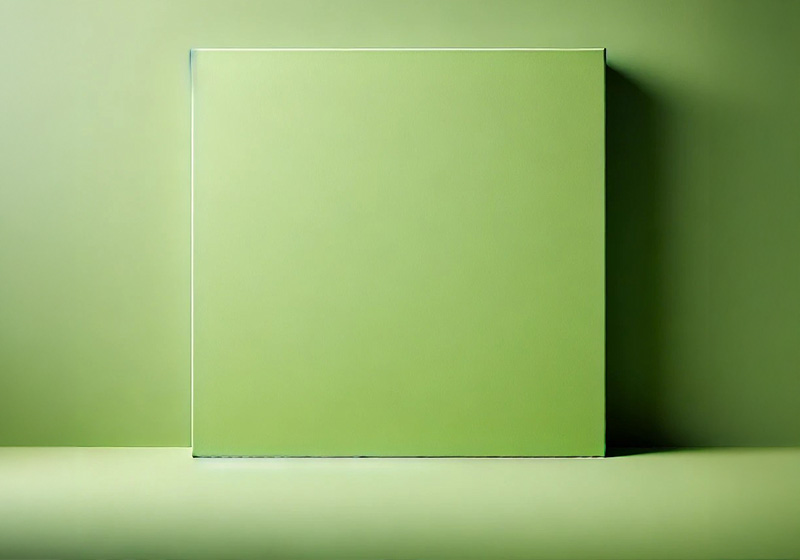Table of Contents
Cheerful, summery and joyful lime green is always guaranteed to improve your mood. But why? Could it be because it is the colour of the ingredients of the ultimate summer cocktail, the mojito? Or because its wavelength stimulates our eyes and is associated with the exotic aroma of the citrus fruit that gives it its name?
Either way, lime green seems to be a very modern hue. Although it was first mentioned in the late nineteenth century, it was in the 1970s that it really became fashionable, with sofas, wallpaper, vintage cars and psychedelic posters all tinged with the colour.
But what has happened to lime green today? Let’s find out, with a whirlwind tour of the uses and powers of this fantastic colour, with some interesting facts along the way.
What colour is lime green?

Lime green is a very bright and intense light green that owes its name to the colour of the peel of a citrus fruit: yes, you guessed it, the lime!
Lime green is halfway between chartreuse – a greenish-yellow colour – and yellow. It is cheerful, vibrant and energetic, and often associated with joy, summer, youth and positivity.
However, there are various shades of lime green available, ranging from slightly lighter to slightly darker. If you want to use lime green online, the classic lime green colour has the HEX code #32cd32. When printing, there are various Pantone codes for darker or lighter lime greens: the classic hue is 14-0452 TPG.
Is lime green a modern colour?
Limes originate in Asia, and specifically Malaysia and India. It is thought they were first imported to Europe in the Middle Ages during the early years of the Crusades. In the following centuries they continued to be grown in south-east Asia, mainly as a remedy for scurvy, which is perhaps why they came to be particularly appreciated by sailors in the British Empire.
But when was the colour lime green first defined? Historians cannot quite agree: some sources say it was used for the first time in English in 1905, while others say it was 1883.
Either way, we can say that lime green started to be considered a colour in its own right in the late nineteenth century. But it was only in the 1970s – possibly aided by the psychedelic counterculture – that the hue became increasingly popular and widely used.
Lime green’s exploits in the 1970s
Even if you weren’t living in 1970s USA, you’ll know from your recollections of sitcoms and films that lime green was a widely used colour in American furnishings at the time.
Back then, especially in the USA and UK, modern sofas, light fittings and wallpaper were often a beautiful lime green, in a slightly duller shade than we are used to today. As a result, lime green is still used today when people decide to give their home furnishings a retro feel.

Some people took this passion for lime green a bit far, however: an apartment in Ramona, California – still there to this day – is completely decked out in lime green, from the carpet to the kitchen worktop. And there was a vibrant lime green police car on the roads in the US city of Cleveland from 1972 to 1978: it is now in a museum.
Lime green in pop culture

We probably have the 1970s to thank for the numerous iconic items from pop culture sporting a beautiful lime green colour. Take, for instance, Mr Bean’s car: the famous Mini that stars in numerous surreal scenes created by British actor Rowan Atkinson is painted a slightly subdued version of lime green.
And for something, or rather someone, even more quintessentially British, one shouldn’t forget the dress chosen by the late Queen Elizabeth II for Prince Harry and Meghan Markle’s wedding in 2018: a magnificent energetic lime green number. Indeed, the Queen, who died in September 2022, flaunted this colour on various occasions over the years.

The less regal (but equally powerful in her communication) Kim Kardashian has also shown her love for lime green on various occasions. The actress and model, famous for adoring fluorescent colours, has regularly been seen in bright lime green clothes and cars.
Lime green logos and brands
Lime green’s association with positivity, energy and vitality makes it very popular with brands.
One striking example is the clothing giant Nike, which since the 1980s has shown a particular fondness for a very bright, almost neon lime green. It has now become a colour in its own right, known by the brand as Volt.

Another brand that used lime green was the low-cost American airline Song, which was active in the early 2000s. People who travelled with the company probably still have the bright aeroplane exteriors burned onto their retinas. Meanwhile, the shared mobility brand Lime, owned by the Californian holding company Neutron, made the colour the very essence of its identity.

Now found in around 30 countries, the brand has helped to turn various European cities lime green.
How about you? Do you love the vibrancy of lime green? And have you used this colour in any of your projects?

